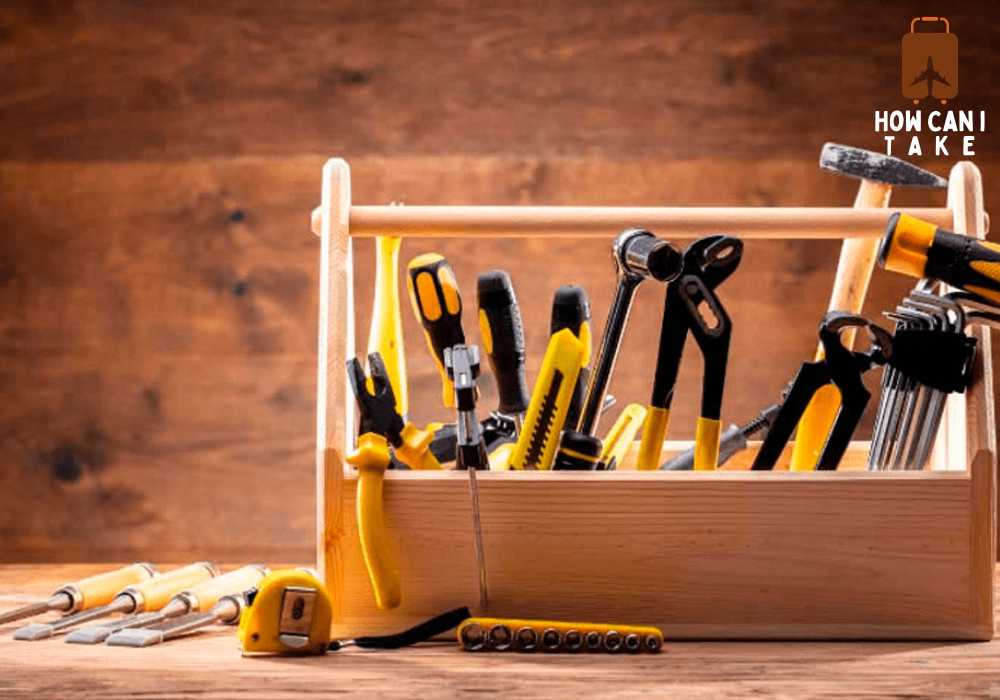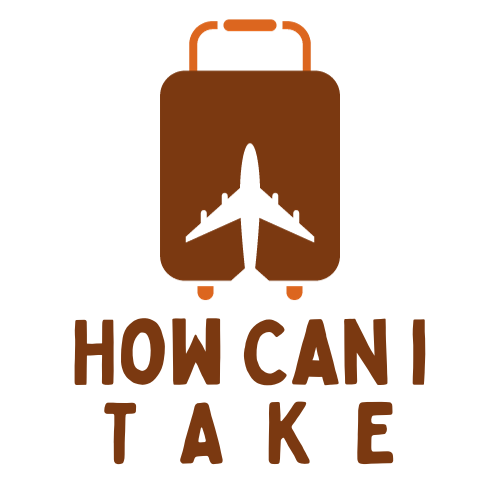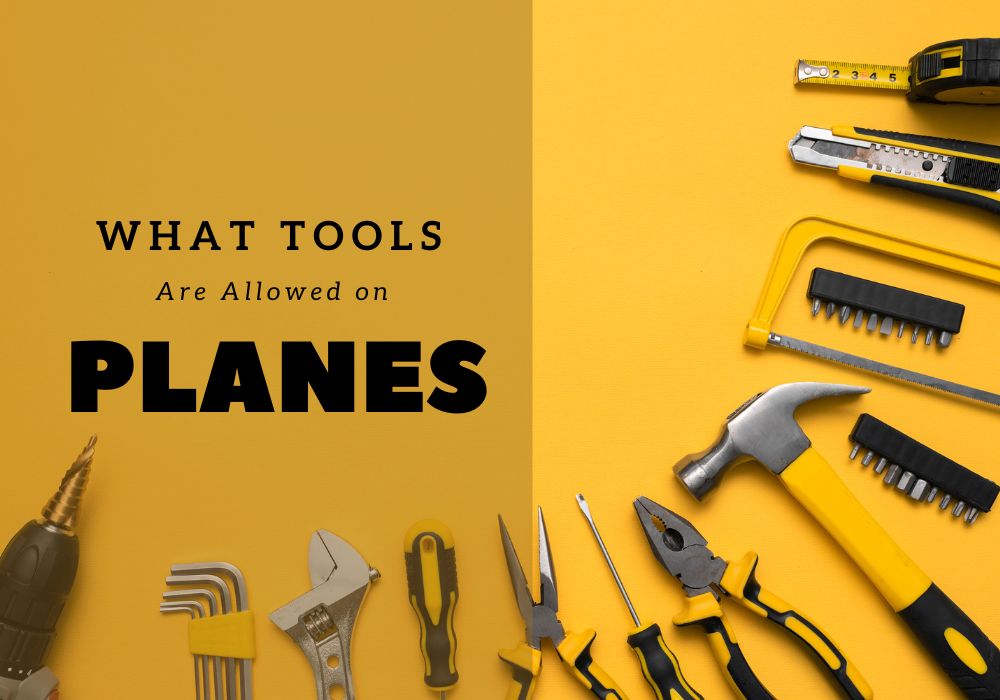If you have plans to travel in the near future and are unsure about which tools are allowed on an airplane, it is crucial that you familiarize yourself with the rules and regulations set forth by the Transportation Security Administration (TSA) before packing your bags.What Tools Are Allowed on Airplanes?The post aims to help you gain a clear understanding of the guidelines regarding the transportation of tools on airplanes, including what tools are permitted and prohibited in both carry-on and checked baggage. We will also provide a comprehensive breakdown of the tools that can be carried in your hand luggage and those that must be checked-in.
Moreover, we will address any special considerations for specific tools, exceptions to these rules, and the consequences of non-compliance. By the time you finish reading this post, you will possess a thorough knowledge of everything you need to know about carrying tools on an airplane.
Table of Contents
Understanding the Rules of Carrying Tools on Airplanes

To ensure a smooth and hassle-free experience today, it is important to understand and comply with the specific rules when it comes to carrying tools on airplanes. Keep in mind that the final decision rests with the security screening officer, so it’s always best to be prepared for additional screening if necessary. When going through the security checkpoint, separate tools with sharp edges and place them in a separate bin to facilitate the screening process. It is crucial to know what tools are allowed in your hand luggage and what should be checked in.
Familiarize yourself with FAA regulations regarding allowable tools and make sure you adhere to them. By being aware of the guidelines and taking the necessary precautions, you can ensure a smoother travel experience while carrying your tools.
The Role of TSA in Regulating Carry-On Items
The Transportation Security Administration (TSA) plays a crucial role in regulating carry-on items on airplanes. Their primary goal is to ensure the safety of all passengers onboard. TSA regulations are in place to prevent any potential threats and maintain security during air travel. It is the responsibility of TSA screening officers to enforce these rules during the security checks at airports. Understanding the rules set by TSA will help you plan your carry-on baggage accordingly, avoiding any unnecessary hassle or delays.
It’s important to note that TSA rules apply to both domestic and international flights departing from the United States. By adhering to these regulations, you can have a smooth and stress-free travel experience.
Identifying Permissible and Non-Permissible Tools on a Plane

When traveling by plane, it’s important to be aware of the tools you can and cannot bring with you. To identify which tools are allowed on airplanes, it’s recommended to check the Transportation Security Administration (TSA) website for a comprehensive list. The TSA regulates what tools are permissible and non-permissible on planes to ensure the safety of all passengers. Some tools may be allowed in checked baggage, while others are prohibited altogether. It’s crucial to avoid carrying tools with sharp edges, firearms, aerosols, ammunition, and other dangerous items. If you are unsure about a specific tool, it’s always a good idea to check with the TSA before your flight.
Additionally, even if a tool is permitted, it must still comply with size and weight restrictions. By familiarizing yourself with these regulations, you can ensure a smooth travel experience without any issues at the security checkpoint.
Tools Allowed in Your Carry-On Baggage
Certain hand tools are permitted in your carry-on baggage, as long as they adhere to specific regulations. Tools like screwdrivers, pliers, wrenches, and scissors are typically allowed on airplanes. It’s important to ensure that these tools are properly packaged to avoid any potential issues during security screening.
Additionally, it’s worth noting that liquids, gels, and aerosols must follow the 3-1-1 rule, so it’s essential to check the packaging requirements for these items. As always, it’s a good idea to consult the TSA regulations for precise guidelines on tools allowed in hand luggage. By familiarizing yourself with these rules, you can ensure a smooth travel experience without any surprises.
What Tools Are Allowed on Airplanes?More Specific

Detailed Breakdown of Allowed Tools in Your Carry-On
When carrying tools on airplanes, it’s essential to be aware of regulations and guidelines. Hand tools like screwdrivers, pliers, wrenches, hammers, and saws are generally allowed in your carry-on baggage. Securely package tools to prevent accidents. Scissors with blades shorter than 4 inches are permitted in your carry-on.
Check size and weight restrictions for tools in hand luggage. The FAA and TSA have specific guidelines for passenger safety and security. Tools may undergo additional screening if necessary.
Familiarize yourself with FAA regulations and current security checkpoint procedures for a smooth travel experience while following tool transportation rules.
Tools That Should be Checked In
When flying, it’s important to know the rules for carrying tools. Some hand tools can be taken in your carry-on, but others should be checked. These include sharp-edged tools, power tools, and certain sharp objects. Pack these tools carefully to protect baggage handlers. Regulations may vary, so check the specific rules. Security officers have the final say on whether a tool can be checked.
Following these guidelines will make your travel experience smoother and avoid issues at security checkpoints.
Comprehensive List of Tools to Check In
When it comes to traveling with tools, it’s important to know what you can and cannot bring on an airplane. Certain tools such as saws, sharp objects, and power tools are required to be checked in your baggage, rather than being allowed in your carry-on luggage. On the other hand, firearms, ammunition, and tools with sharp edges are strictly prohibited in carry-on luggage. It’s crucial to check the specific rules on tools allowed in checked baggage, as regulations may vary.
Moreover, make sure that you securely pack your tools, following the packaging guidelines set by the airline. It’s important to remember that tools that are checked are subject to the final decision of security screening officers. By adhering to these guidelines, you can ensure a smooth and hassle-free travel experience today.
Special Considerations for Certain Tools

When traveling with tools, it’s important to be aware of any special regulations that may apply to certain items. For example, specific tools like lithium batteries, breast milk, and cell phones have their own set of rules when it comes to air travel. Lithium ion batteries are allowed, but there are restrictions on the watt hours and packaging. Breast milk, on the other hand, is permitted but may require separate screening. And while cell phones are generally allowed, you may be subjected to a brief survey by a security officer. It’s crucial to familiarize yourself with the FAA regulations and guidelines to ensure a smooth travel experience today.
Remember to also check for any other specific rules or regulations related to the tools you’re carrying.
What happens if you don’t comply with the rules?
Non-compliance with TSA regulations on tools allowed on airplanes can lead to confiscation or additional screening. Failure to comply may result in delays or missed flights, impacting your travel plans.
Familiarize yourself with the rules beforehand to avoid potential issues, as security screening officers have the final say. Always check specific guidelines for a smooth travel experience.
Are there any exceptions to these rules?
Exceptions to the rules on tools allowed on airplanes may exist, particularly for professionals who require specific tools. These exceptions are evaluated on a case-by-case basis by security screening officers. If you believe there are exceptional circumstances, it’s advised to contact TSA in advance for guidance.
However, exceptions are rare, so it’s crucial to comply with the rules unless otherwise instructed. Make sure to check the specific regulations to ensure compliance.
Frequently Asked Questions
What is not allowed in checked baggage?
Items that pose a potential threat, such as flammable, explosive, or corrosive substances, are prohibited in checked baggage. Firearms and other weapons are also not allowed. Liquids over 3.4 ounces (100 milliliters) must be in a clear, quart-sized bag. Check with your airline for specific guidelines on prohibited items.
Are utility tools allowed on planes?
Utility tools, such as screwdrivers, wrenches, and pliers, may be allowed on planes depending on their size. However, larger tools like hammers or saws should be packed in checked luggage. Always check with the airline and TSA for specific guidelines before traveling with any tools.
Do you have to notify them when checking in your baggage that there are tools?
Yes, it is advisable to inform the airline when checking in your baggage if you have tools. This helps prevent any delays or confusion during the security screening process. Always check TSA guidelines for any restrictions on tools in both carry-on and checked baggage. Being honest upfront ensures a smooth travel experience.
What can you fly with?
You are allowed to fly with personal care items like toothbrushes, razors, and nail clippers. Electronic devices such as laptops, smartphones, and tablets are also allowed in carry-on luggage. However, sharp objects like knives, scissors, and tools must be packed in checked baggage. Liquids should be limited to containers of 3.4 ounces or less and placed in a clear plastic bag.
Conclusion and final thoughts
In conclusion, it is important to understand and follow the rules and regulations set by the TSA when it comes to carrying tools on airplanes. The TSA plays a crucial role in ensuring the safety and security of air travel, and they have specific guidelines in place regarding the types of tools that are allowed in your carry-on baggage. It is essential to familiarize yourself with these guidelines and pack your tools accordingly to avoid any inconvenience or delays at the airport.
Remember, if you have any doubts about whether a tool is permissible or not, it is always best to check it in as checked baggage. By adhering to these rules, you can have a hassle-free travel experience and contribute to the overall safety of air travel.





Leave a Reply